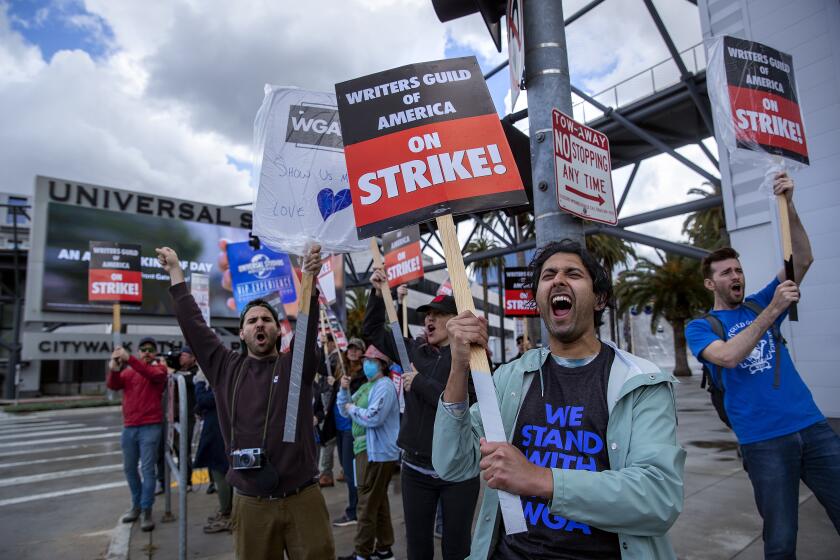U.S. economy grew last quarter at a 2.1% rate, government says

- Share via
WASHINGTON — The U.S. economy grew at a 2.1% annual pace from April through June, extending its sturdy performance in the face of higher interest rates, the government said Thursday, leaving its previous estimate unchanged.
The second-quarter expansion of the nation’s gross domestic product — its total output of goods and services — marked a modest deceleration from the economy’s 2.2% annual growth from January through March.
Consumer spending, business investment and state and local government outlays drove the second-quarter economic expansion.
The economy and job market have shown surprising resilience even though the Federal Reserve has dramatically raised interest rates to combat inflation, which last year hit a four-decade high. The Fed has raised its benchmark rate 11 times since mid-March 2022, leading to concerns that ever-higher borrowing rates will trigger a recession.
Still, those higher rates have taken a toll. Consumer spending rose at an annual rate of just 0.8% from April through June, down sharply from the government’s previous estimate of 1.7% and the weakest figure since the first quarter of 2022.
But business investment, excluding housing, a closely watched barometer, rose at a 7.4% annual pace, the fastest rate in more than a year. And state and local government spending and investment jumped 4.7%, the biggest such quarterly gain since 2019.
The Federal Reserve left its key interest rate unchanged for the second time in its last three meetings, a sign that it’s moderating its fight against inflation.
So far, though, inflation has eased without causing much economic pain, leading to hope the Federal Reserve can pull off a so-called soft landing — slowing the economy enough to conquer high inflation without causing a painful recession.
Growth is believed to be accelerating in the current July-September quarter, fueled by still free-spending consumers. Many Americans, for example, flocked to theaters for the hit summer movies “Barbie” and “Oppenheimer” and splurged on Taylor Swift and Beyonce tickets. Business investment is also thought to have remained solid.
Economists have estimated that the economy expanded at a roughly 3.2% annual rate in the third quarter, which would be the fastest quarterly growth in a year. Even more optimistic estimates have projected that growth from July through September exceeded a 4% annual rate, according to the Federal Reserve Bank of Atlanta.
Even so, the acceleration in growth isn’t likely to endure. The economy is expected to weaken in the final three months of the year. Hiring and income growth are slowing. And economists think the savings that many Americans amassed during the pandemic from federal stimulus checks will have evaporated by next quarter.
The 2023 WGA strike lasted 148 days, making it one of the longest work stoppages in Hollywood history. Why did it last so long?
The economy also faces an array of obstacles that are expected to hobble growth. They include surging oil prices, the resumption of student loan payments, the effects of the United Auto Workers strike, the loss of pandemic-era child care aid and a likely government shutdown beginning this weekend.
The combined effects of those factors will hamper Americans’ ability to spend and likely weaken the economy.
More to Read
Inside the business of entertainment
The Wide Shot brings you news, analysis and insights on everything from streaming wars to production — and what it all means for the future.
You may occasionally receive promotional content from the Los Angeles Times.












